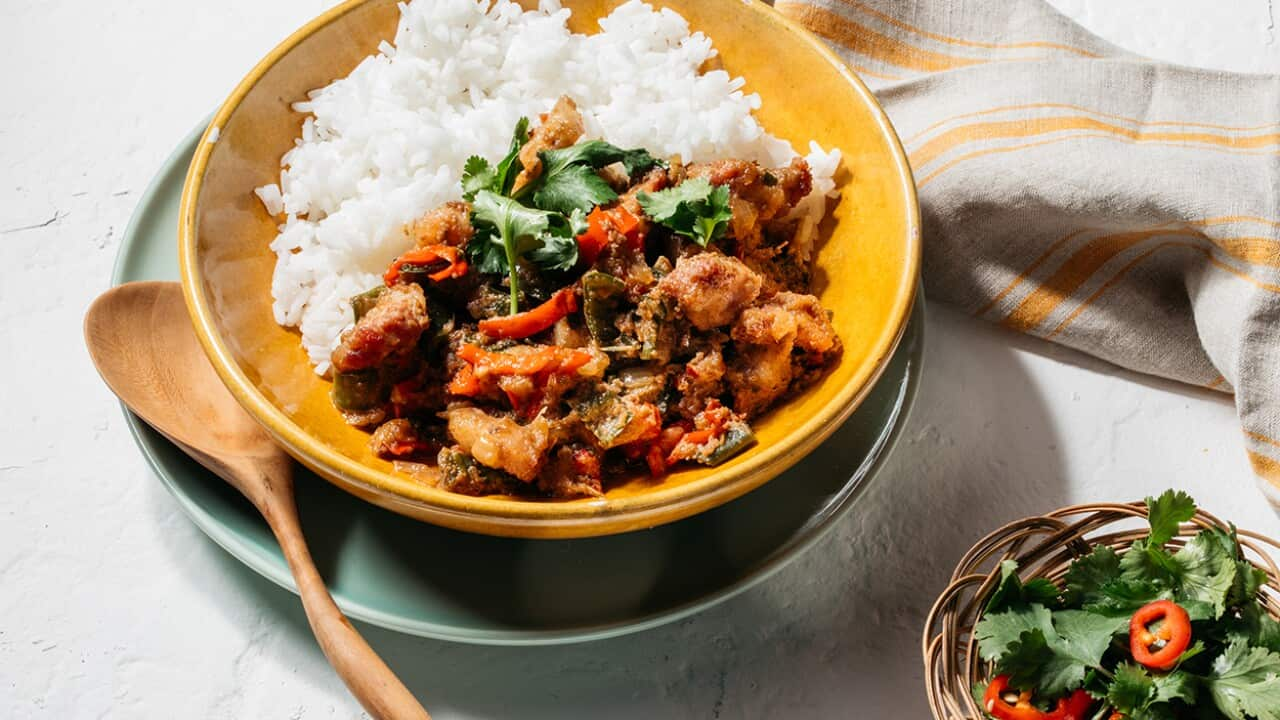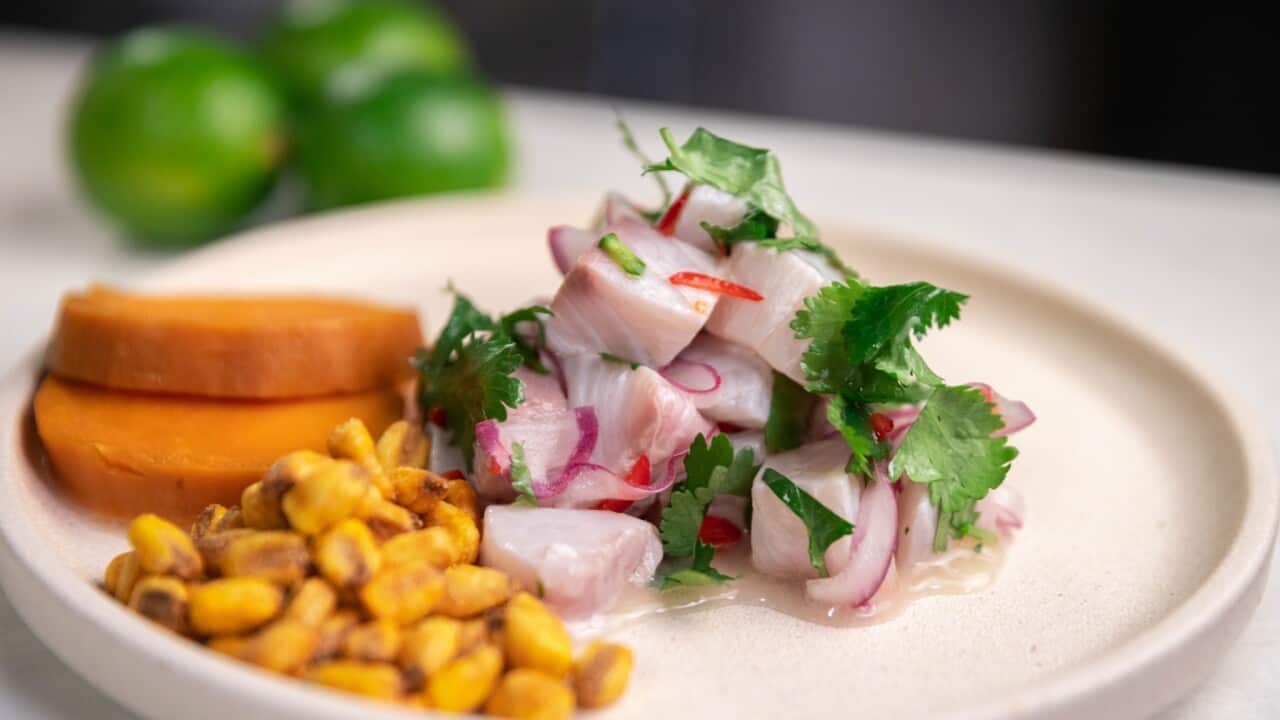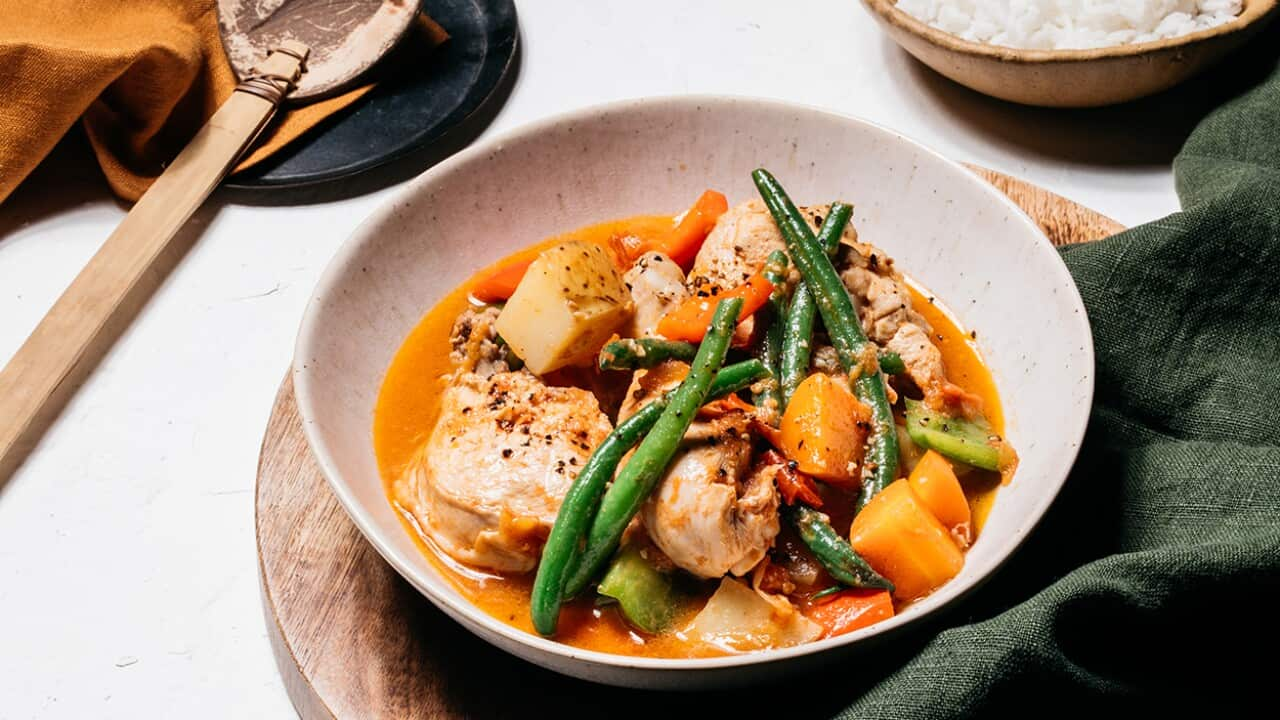--- Join Yasmin Newman as she explores a range of Filipino dishes and flavours in streaming now at ---
My first kinilaw was just as it should be. Exploring the far-flung islands of Palawan, our banka (boat) dropped anchor for lunch at sea. Our host caught fish, cleaned it, and then presented us with plump morsels briefly bathed in vinegar and tumbled in ginger, chilli, Asian eschalot and a dash of coconut cream. The fresh fish was pristine and the taste a tribute to the simple natural ingredients.
With ceviche well known in Australia, it's easy to describe kinilaw by making the comparison. Indeed, they share similarities – typically raw seafood marinated in acid to cure and add a tantalising flavour, with an assemblage of vibrant herbs and aromats thrown in. There's also a connection between the Spanish colonial history of the Philippines and ceviche's home of Peru and Latin America, especially Mexico, which governed the Philippines as Viceroyalty of New Spain for the Spanish crown for 250 years.
KINILAW RECIPE

Kinilaw with pineapple, makrut lime and coriander
However, the parallel masks the distinct origins and differences between the dishes. Kinilaw is native Filipino fare. It's the food from before foreign influence, where our ancestors made use of ingredients from the land. It's uncommonly fresh, simply cooked and requires little adornment. Native Filipino fare offers an unadulterated taste of the surroundings and is a cornerstone of the cuisine to this day, from sinigang (sour soup) to inihaw (barbecue).
If kinilaw is not the oldest Philippine food, it's still among the most ancient. Kinilaw can be traced back a thousand years in archaeological remains found in the north of the country. The first written record is said to have been in 1525 by Antonio Pigafetta, a member of Ferdinand Magellan's crew.
It's uncommonly fresh, simply cooked and requires little adornment.
The word kinilaw refers to the method of cooking in vinegar or another souring agent to hold its sublime natural state. The revered Filipino food historian Doreen Fernandez Gamboa poetically called the mixture "liquid fire" and was enamoured by both the absence of heat and the unique result it offered. "Fire transforms food from the raw to cooked. Vinegar does cook, but if applied at the judicious moment, it keeps the freshness," she said.
Kinilaw, as Fernandez also advocated, is a technique more than a dish. That's to say, there is no one version or singular set of ingredients. Kinilaw is often made with tanigue (mackerel), but there are countless versions, from octopus to seaweed and goat to green mango, which speak to the local produce in each region and town. In fact, kinilaw can be found across the country, from coastal regions to mountain villages.
The same goes for the curing agent; typically native vinegar, like coconut sap vinegar (sukang tuba) or nipa palm vinegar (sukang paombong) but also native citrus such as kalamansi, dayap or biasong. The latter is also used as flavourings, along with coconut milk, ginger onion and chilli, but a whole range of ingredients can be added, from fruit to salted egg and sea cucumber. There are also relatives of kinilaw, like sinuglaw, the southern spinoff topped with barbecued pork, or kilawin, which starts with something cooked instead of raw, like grilled meat, and finishes it similarly in vinegar. However, with various regional dialects and linguistic crossover throughout the country, kilawin is also another name for kinilaw in certain regions.
There are also relatives of kinilaw, like sinuglaw, the southern spinoff topped with barbecued pork, or kilawin, which starts with something cooked instead of raw, like grilled meat, and finishes it similarly in vinegar. However, with various regional dialects and linguistic crossover throughout the country, kilawin is also another name for kinilaw in certain regions.

Kalamansi is a citrus native to the Philippines. Source: The Entree.Pinays
Kinilaw is a technique more than a dish.
While kinilaw is well known in the Philippines, it doesn't have the same widespread recognition as dishes like adobo, which chef David del Rosario is trying to remedy with guests from around the world. At his restaurant Cev on Siargao Island in the country's south, he brings two dishes – ceviche and kinilaw – together in one setting and showcases the various local ingredients and combinations the technique of 'cooking' in acid can produce.
His 'General Luna' kinilaw combines the catch of the day with spiced mango, grilled eggplant and fried sweet potato in a delicious pool of coconut vinegar and coconut milk.
Kinilaw is a symphony of freshness, sourness and texture found in natural ingredients. What will you kinilaw?
Watch Episode 1 here:
MORE FILIPINO FOOD

Opening the door on my Filipino pantry







